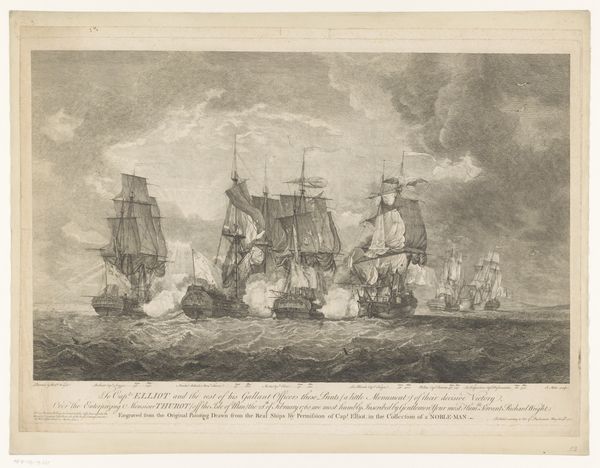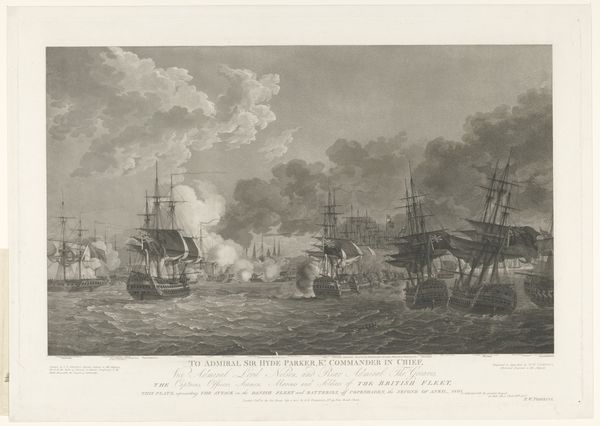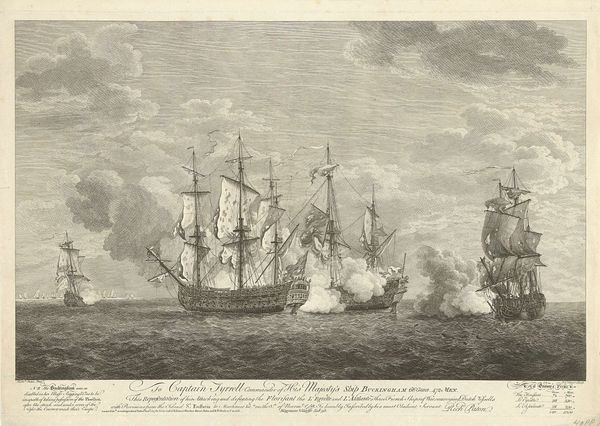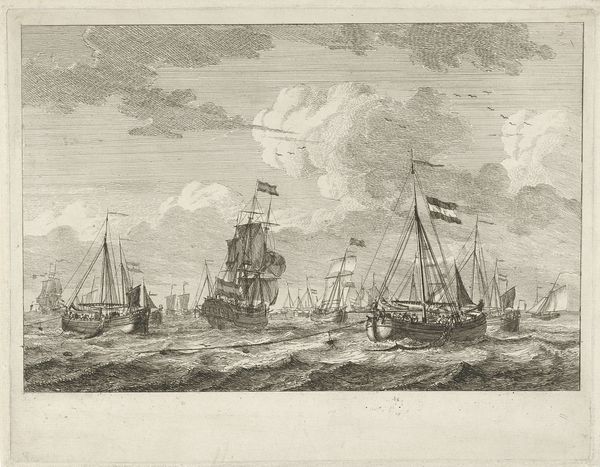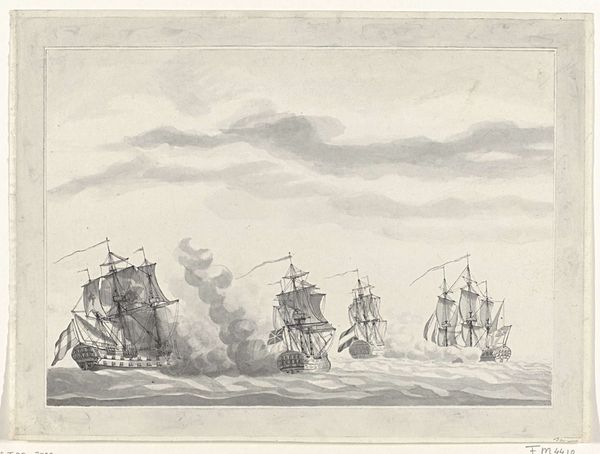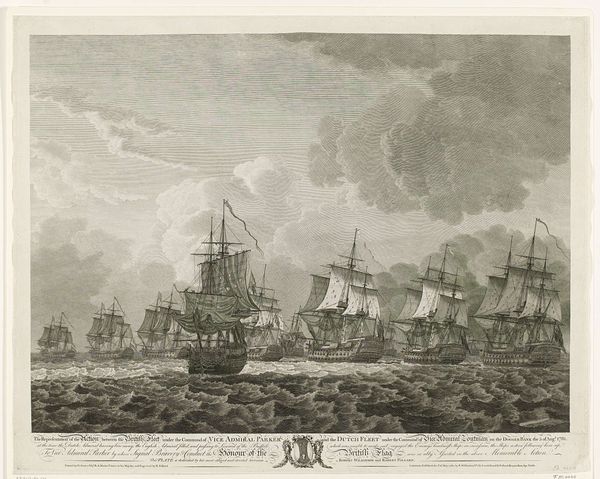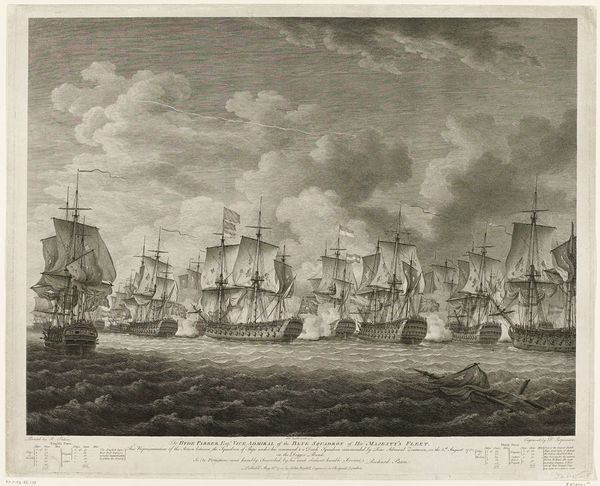
Zeeslag waarbij de Engelse vloot de Fransen verslaat bij Lagos 1761
0:00
0:00
Dimensions: height 533 mm, width 637 mm
Copyright: Rijks Museum: Open Domain
Curator: So, here we have "Zeeslag waarbij de Engelse vloot de Fransen verslaat bij Lagos," or "Naval battle in which the English fleet defeats the French at Lagos". This engraving, made in 1761, is currently held here at the Rijksmuseum. It's attributed to Pierre Charles Canot, a master of this intricate printmaking technique. Editor: Wow, right away it feels like a swirling, chaotic dreamscape rendered in delicate lines. All that smoke! You almost feel seasick looking at it. There's so much dramatic action. Curator: Absolutely. Battle scenes were popular subjects, reflecting national pride and imperial power. But also consider how the line engraving process, demanding precision and control, shaped the way such events were presented and consumed by the public. These prints often served as records of key events but also as pieces of propaganda, subtly shaping public opinion. Editor: Propaganda, sure, but there's something else here, a melancholy. Beyond the glorified violence there's an eerie beauty, even tenderness. Notice how the lines capture the delicate texture of the smoke, and how each vessel feels intensely isolated amidst the churning ocean, no matter its allegiances. Curator: Interesting take! Indeed, the medium contributes to how the scene is perceived. Engravings like this were widely circulated and collected, playing a vital role in shaping narratives about warfare and nationhood, which in turn contributed to national identity. Editor: True, it's political art, sure, but maybe there's an unintended meta-commentary on war itself happening. Here we are, centuries later, admiring the technical skill, finding "beauty," while forgetting about the messy realities of sea warfare: disease, chaos, young men's blood. Curator: And what of those sailors? The focus is, naturally, on ships locked in combat. The reality of life at sea, so carefully depicted by maritime historians in the period, seems oddly invisible in such popular art forms. It’s this intersection of art, politics, and the everyday lived experience that continually intrigues. Editor: Yeah, the details! And this work's black and white medium almost creates an aesthetic removal. Regardless, though I find beauty in this chaotic mess, it serves as an intense reminder of our own present struggles and triumphs and how they will one day fade into a grainy narrative. Curator: An elegiac sentiment, and a good way to view history and art! A useful provocation, to encourage questioning perspectives while remembering this historical moment.
Comments
No comments
Be the first to comment and join the conversation on the ultimate creative platform.

